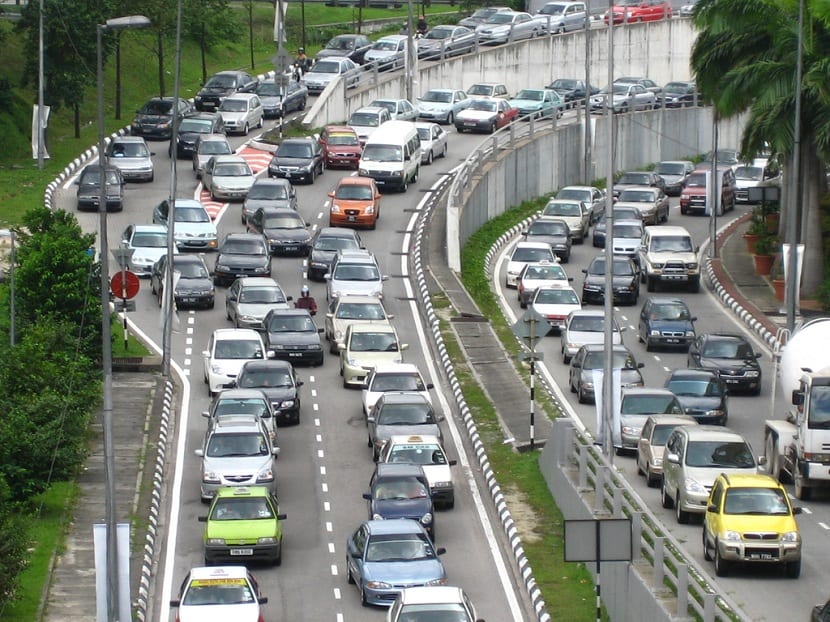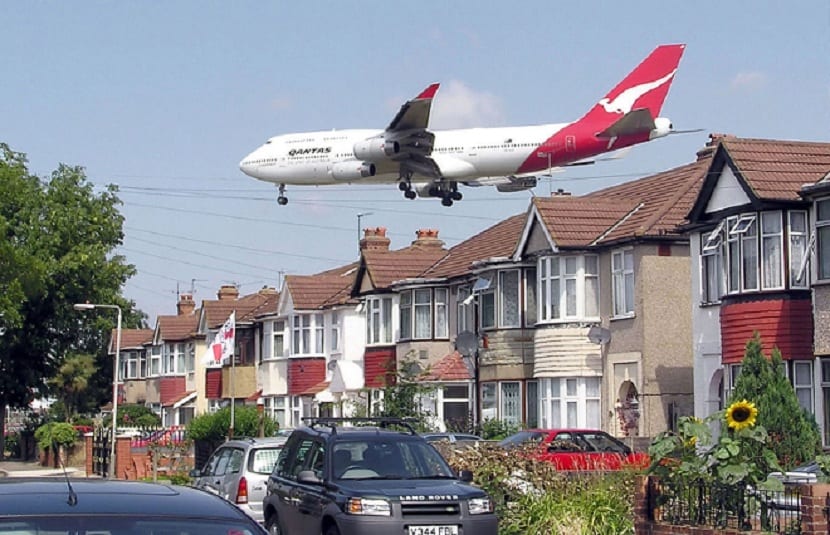
Today two thirds of the world's population lives in large cities. The cities have become in sources of great noise emissions and acoustic pollution. The main source of noise in cities is road traffic. The concentration of motor vehicles, traffic, traffic jams, horns, etc. They emit noise and can cause diseases in humans.
The World Health Organization (WHO) sets a daytime limit of 65 decibels (dB) so that it is not harmful to health. Yet millions of people are exposed to higher levels every day. What can be done in this situation and what are the risks of continuous exposure to high noise levels?
Characteristics of noise pollution

Noise pollution has specific characteristics that differentiate it from other pollutants:
- It is the cheapest pollutant to produce and requires very little energy to be emitted.
- It is complex to measure and quantify.
- It does not leave residues, it does not have a cumulative effect on the environment, but it can have a cumulative effect on its effects on man.
- It has a radius of action much smaller than other pollutants, that is, it is located in very specific spaces.
- It does not travel through natural systems, like wind-blown polluted air, for example.
- It is perceived only by one sense: hearing, which makes its effect underestimated. This does not happen with water, for example, where contamination can be perceived by its appearance, smell and taste.
Noise in cities

The noise and noise pollution specialists They are the ones who measure noise levels in cities and produce noise maps. They establish the noise levels found in each area of the cities and the threshold levels both during the day and at night that they should have to achieve good health.
Noise thresholds are higher during the day than at night. Continuous exposure to high noise levels can cause illness or problems such as stress, anxiety, the appearance of cardiovascular problems And even in children, problems can appear in which they are impaired in their learning process.
There are also other problems related to high noise levels such as:
Insomnia

In places in cities with high nightlife such as bars, pubs, discos, crowds, etc. They are more likely to have high noise levels late at night. This causes difficulty sleeping in the people who live around these places.. Continual difficulty sleeping and few hours of sleep cause insomnia. In addition, insomnia increases the appearance of psychological disorders such as stress or anxiety; as well as alterations of the immune system, forgetfulness and learning difficulties.
There are studies that show that in areas with high levels of noise have increased hospital admissions.
Heart problems

The maximum level of exposure to noise recommended by the WHO is 65dB during the day. Chronic daily exposures to noise levels above 65 dB or acute exposures above 80-85 dB can cause long-term cardiac disturbances, even if those affected do not notice symptoms of disease. Those affected do not know it since the body responds to high noise levels by activating nerve hormones that increase blood pressure, heart rate, vasoconstriction and thicken the blood.
Obviously, older people are more sensitive and vulnerable to this type of disease due to chronic exposure to high noise levels.
Hearing problems

People who frequent work or leisure places with high noise levels are more prone to hearing injuries. These injuries destroy cells in the inner ear and damage hearing.
Hearing loss generates consequences that affect our daily lives, hinders social relationships, decreases academic and work performance, causes feelings of isolation, loneliness and depression.
To avoid this it is recommended:
- Avoid noisy places
- Protect your ears with suitable protectors
- Television and radio turned on at a moderate volume
- When using headphones, do not exceed 60% of the maximum volume
- Do not exceed the use of them for more than one hour a day
- Use devices with a volume limiter so as not to exceed healthy levels
- When driving, do not use the horn unnecessarily
- During musical events stay away from the speakers
Noise pollution generates more sick people

To quantify and compare the severity of noise pollution, a study was carried out at the Barcelona Institute for Global Health (ISGlobal), a center promoted by the ”la Caixa” Banking Foundation, which has estimated, for the first time, the burden of disease caused by urban and transport planning in Barcelona.
Among all the environmental factors that can cause diseases in citizens, it is the noise from traffic that causes the most quantity, even higher than diseases related to lack of physical activity and air pollution.
This study has also reached the conclusion that if Barcelona had better planning of urban spaces and transport it could postpone up to 3.000 deaths a year. In addition, if the international recommendations for the development of physical activity, avoiding exposure to air pollution, noise and heat had been met, 1.700 cases of cardiovascular diseases could be avoided each year, more than 1.300 cases of hypertension, close to 850 cases of stroke and 740 cases of depression, among others.

Noise and health levels

The noise scale measured in decibels according to the human ear is:
- 0 Minimum level of hearing
- 10-30 Low noise level equivalent to low conversation
- 30-50 Low noise level equivalent to normal conversation
- 55 Acoustic comfort level on average
- 65 Maximum permissible level of acoustic tolerance established by WHO
- 65- 75 Annoying noise equivalent to a street with traffic, high television ...
- 75-100 Ear damage begins, causing uncomfortable sensations and nervousness
- 100-120 Risk of deafness
- 120 Acoustic pain threshold
- 140 Maximum level that the human ear can withstand
Sound of nature

With noise pollution, urban environments and high noise levels we are forgetting the sound of nature. Many people, even hiking, wear headphones and listen to music instead of enjoying the sound of nature.
The gift that is the sound of a bird or that of water falling on a spring is being lost due to a process that is resembling a kind of deafness. The tranquility of the chorus of the natural world is in danger of disappearing and losing importance to the current generation, as people ignore the sounds around them.
Background noise levels that are increasing in some areas threaten people to be unaware of certain sounds such as the song of a canary, the falling water or the rustle of the leaves of the trees when there is wind, which can be heard from time to time even in green urban areas.
It is not yet known for sure why, but there are studies that confirm that listening to the sound that nature makes it is beneficial for health. Calm the mind, relax the muscles, avoid stress, etc. This may be because the human being in millions of years of evolution has associated the quiet sounds of nature with safety.
How to avoid noise pollution in cities

Since road traffic is the biggest source of noise, we have to focus on reducing it. There are infrastructures that are built on the highways that pass near homes or those that are urban (they pass through the middle of the city) to avoid excessive noise.
For example, we find the noise screens. These are walls built at the edges of the highways to reduce the amount of noise that passes through them. In urban environments they can also be trees and shrubs that, apart from reducing noise, purify the polluted air.
There are projects to take advantage of renewable energies and to avoid noise that are being developed. It is about solar roofs on motorways. Cover roads, highways and railways with solar photovoltaic covers It is already an option with the odd installation in operation, as is the case of a high-speed train line in Belgium.
The nuisance caused by the sun at dawn and dusk would be largely avoided, as well as overheating of engines in areas of high insolation such as deserts and warmer countries and drastically reduce noise emitted in urban areas. In addition, we have the energy contribution that this entails, coming from a renewable, non-polluting and efficient source.
As you can see, noise is invisible to the human eye, but its consequences are quite serious. Therefore, we have to do our part to avoid excessive noise and not have health problems.
In my case I usually listened to music with headphones for hours at an excessive loud volume and indeed I had a lot of stress and too much anxiety.
Thanks for the contribution, greetings from Peru!